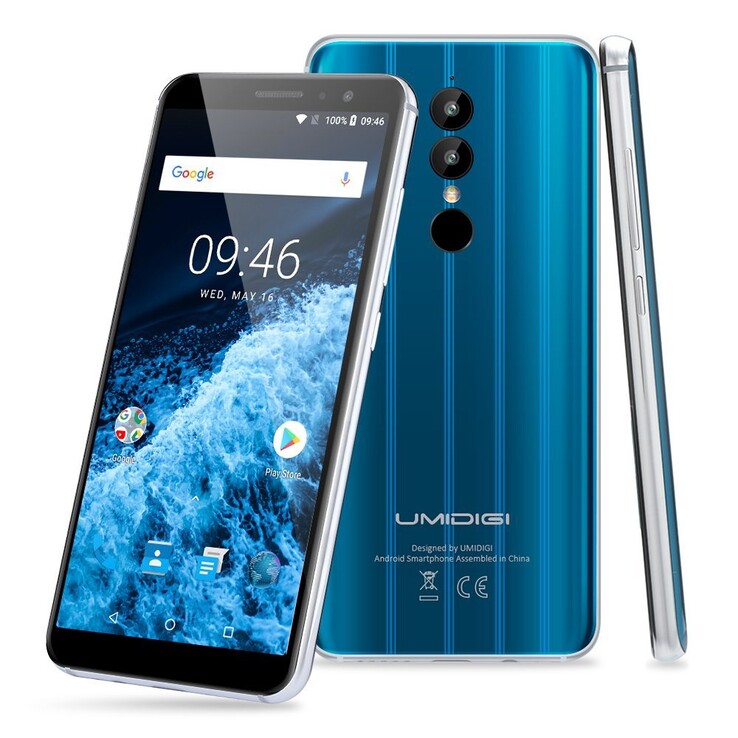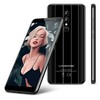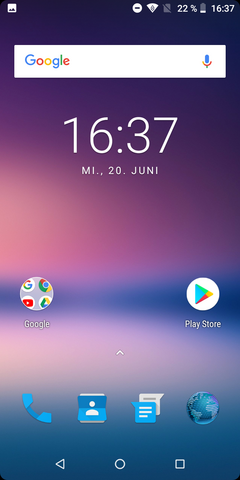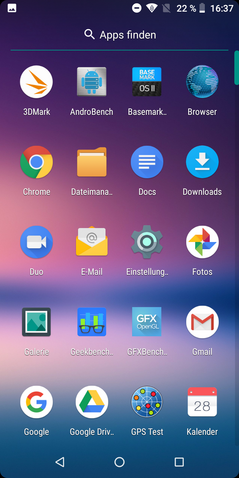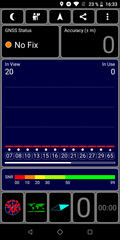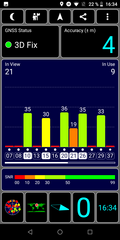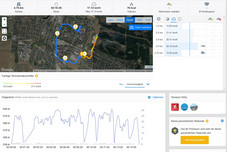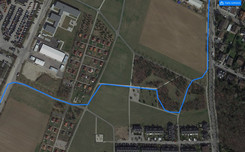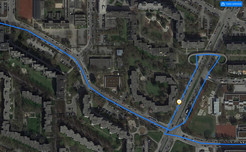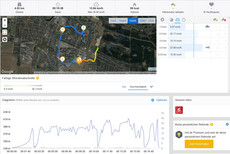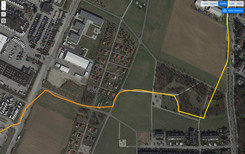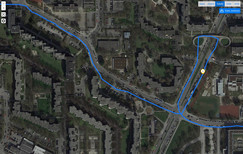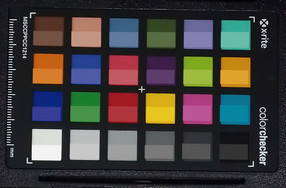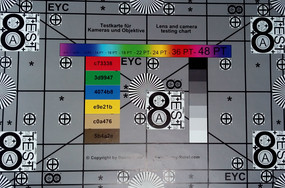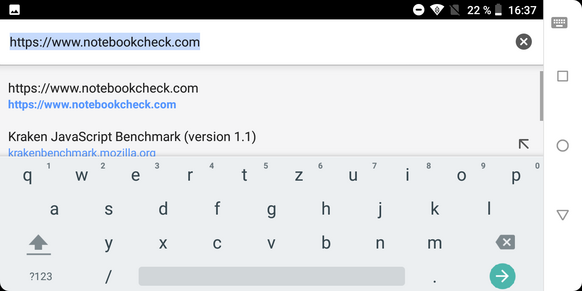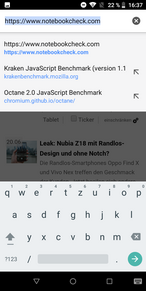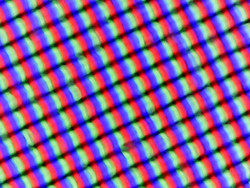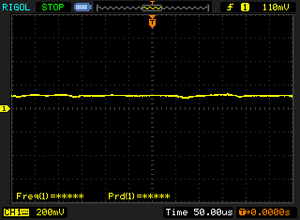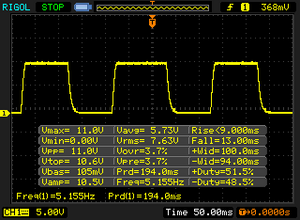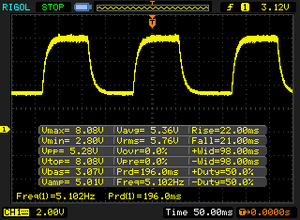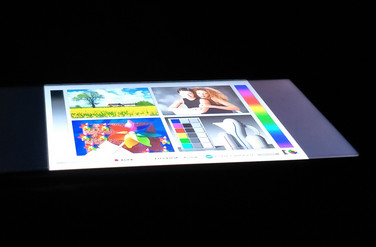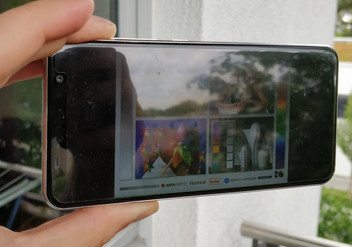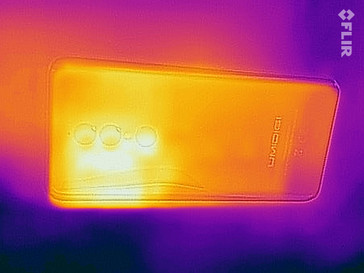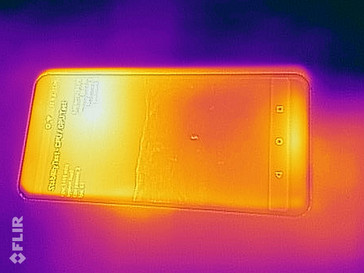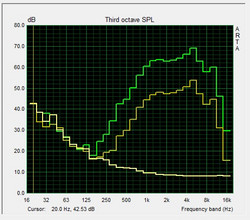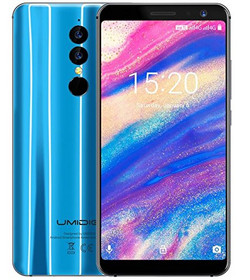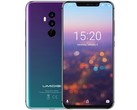UMIDIGI A1 Pro Smartphone Review
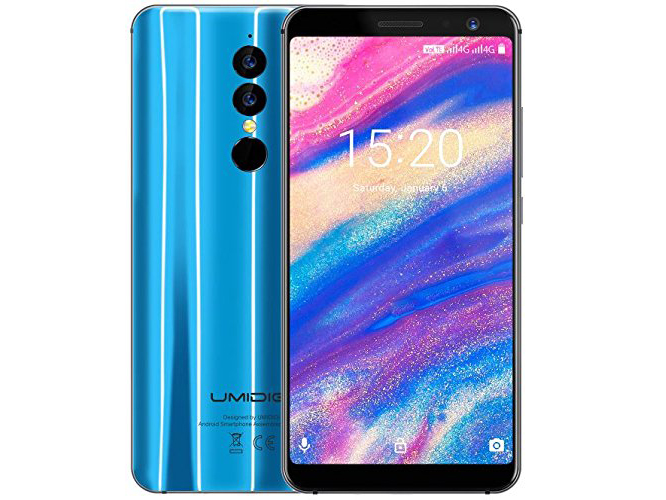
UMIDIGI is a Chinese smartphone manufacturer whose devices are also available in Europe. UMIDIGI tend to release smartphones with interesting designs and narrow bezels. The UMIDIGI A1 Pro continues this trend thanks to its 2:1 aspect ratio display, narrow bezels and a shimmering metallic back. UMIDIGI has priced the A1 Pro at 120 Euros (~$138), which is particularly cheap given its aesthetics.
We have chosen to compare the A1 Pro against the Motorola Moto E4 Plus, the Xiaomi Mi A1, the Sony Xperia L1 and the Honor 6X. These comparison devices will demonstrate whether the A1 Pro has more to it than just its looks.
Case
The A1 Pro is available in black, silver and blue. The top and bottom display bezels are black on every variant. The sides are silver for the blue and silver variants and black for the black version. The back has a shimmering metallic finish reminiscent of the Honor 9, with vertical bands of light and different shades of color appearing on the back when it catches the light. The back gives the A1 Pro a premium look given its affordable price. The case is stable too, with our test device withstanding attempts at twisting it and depressing the case and display with our fingers.
The A1 Pro measures 145.1 mm x 69.1 mm x 8.9 mm and weighs 173 g. Overall, the device feels good in the hand despite being bulkier than some competitors. For example, the Honor 6X and Xiaomi Mi A1 are 8.2 mm and 7.3 mm thick, respectively.
Connectivity
The A1 Pro is equipped with 16 GB of internal storage and 3 GB of RAM. This combination is standard for current smartphones in this price range. Some devices like the Sony Xperia L1 have less RAM, while others like the Honor 6X and the Mi A1 have greater internal storage and more RAM in the Mi A1’s case. Both devices are more expensive than the A1 Pro though.
There is a USB 2.0 Type-C port, which is not a given for a device at this price. A mono speaker and a 3.5 mm headphone jack flank the USB-C port on the bottom edge of the device.
The A1 Pro is a dual-SIM device that even has a dedicated microSD card slot that accepts up to 256 GB of expandable storage.
Software
The A1 Pro runs stock Android Oreo 8.1. Our test device shipped with Android security patch level April 5, 2018, which was practically three months old at the time of testing. We expect this from a cheap smartphone, but UMIDIGI ought to issue an update in the interests of security.
Fortunately, there are no additional apps, so the A1 Pro is bloatware free.
Communication & GPS
The A1 Pro supports both 5 GHz Wi-Fi and 14 LTE bands, neither of which we expect from a device at this price. These bring added convenience as the volume of LTE bands means that the A1 Pro can connect to LTE networks when travelling while 5 GHz is currently the lesser used consumer Wi-Fi network. This means that the A1 Pro has the option of connecting to a 5 GHz network where the 2.4 GHz one is crowded.
Our test device had a relatively good mobile signal even in buildings during our short test of LTE and mobile signal capabilities.
The A1 Pro supports IEEE 802.11 a/b/g/n. Wi-Fi speeds are as expected for 802.11 n networks, but our test device is much slower than the Sony Xperia L1 and the Xiaomi Mi A1, for example.
| Networking | |
| iperf3 transmit AX12 | |
| Xiaomi Mi A1 | |
| Sony Xperia L1 | |
| Honor 6X | |
| Umidigi A1 Pro | |
| Lenovo Moto E4 Plus | |
| iperf3 receive AX12 | |
| Xiaomi Mi A1 | |
| Sony Xperia L1 | |
| Umidigi A1 Pro | |
| Honor 6X | |
| Lenovo Moto E4 Plus | |
The A1 Pro supports GPS, GLONASS and BeiDou for location services. Our test device cannot locate us indoors, but it can do so outdoors up to an accuracy of four meters after some waiting.
We took the A1 Pro on a bike ride to test its location accuracy against a professional navigation device, the Garmin Edge 520. Our test device performed well, recording the course accurately and usually locating us on the side of the street on which we were cycling. The A1 Pro lacks the accuracy of the Garmin though, with our test device recording a 220 m shorter course than the Garmin. This equates to around a 5% difference in total distance recorded. Overall, the A1 Pro should be suitable for all general navigation tasks but not those which require a high degree of accuracy.
Telephone Function & Call Quality
The A1 Pro uses the standard Google Phone app for making and receiving calls.
The A1 Pro has impressive call quality, with the earpiece reproducing our voice clearly for our call partner. Our counterpart’s voice lacks presence, but this is a criticism that we typically reserve for more expensive smartphones and not ones priced around 120 Euros (~$138). Our counterpart is clear over the speakerphone too. We would recommend holding the A1 Pro close to your mouth when talking over the speakerphone; otherwise, you will only be audible if you speak loudly.
Cameras
The 5 MP front-facing camera takes relatively sharp photos, but colors look oversaturated. Most of the flowers in our sample photo look red, but many are yellow, orange or violet, such is the degree of color oversaturation. Even bright areas are easily overexposed too.
The rear-facing camera has two sensors, the main one of which is an f/2.0 13 MP sensor while the secondary sensor is 5 MP. The secondary camera allows the A1 Pro to create depth-of-field bokeh effect photos. Our first sample photo is illustrative of the issues with the rear-facing cameras. The camera focuses more on the background and bright areas are overexposed to the extent of dominating the rest of the photo. The environment looks good, but details are rather muddy overall.
Low-light performance pales in comparison to the OnePlus 5T or the Apple iPhone X, but then these devices are considerably more expensive. Overall, low-light performance is passable for such a cheap smartphone.
The A1 Pro can record videos in up to 1080p at 30 FPS. Recordings come out with a blue tint to them, while exposure levels vary noticeably with changing lighting conditions. Generally, recordings are reasonably sharp, and the camera should be adequate for all but demanding users.
We then tested the A1 Pro in controlled lighting conditions for a closer examination of its camera capabilities. Colors are generally too dark, as the ColorChecker diagram illustrates. Our test chart highlights that the A1 Pro struggles to capture text against a color background, with the results coming out rather blurry. The camera is still acceptable for a 120-Euro (~$138) device though.
Accessories & Warranty
The A1 Pro comes with a protective cover, a Quick Charge power supply, a USB cable and a SIM removal tool.
There are some things worth bearing mind in terms of warranty. Any UMIDIGI specific warranty may be difficult to rely on as they are only based in China. However, you will have a statutory warranty if you buy the A1 Pro through a European supplier. UMIDIGI also trade on Amazon Germany, Italy, Spain and the UK. This means that the device comes with an Amazon warranty too in addition to what is statutory. Overall, there is nothing to worry about if you are careful from whom you buy the A1 Pro. Please see our Guarantees, Return policies and Warranties FAQ for country-specific information.
Input Devices & Operation
UMIDIGI have installed Google Gboard as the A1 Pro’s default keyboard.
Our test device came with a screen protector preinstalled that is difficult to remove, as is often the case with Chinese smartphones. The display is still usable with the default screen protector applied, but there is a greater resistance when sliding your finger across the screen protector than there is with across the glass display. The touchscreen worked well during our tests and remained sensitive into the corners of the display.
There is a fingerprint sensor on the back, which quickly and reliably unlocks the device.
The A1 Pro uses the standard array of three onscreen navigation buttons. The only hardware buttons are the volume rocker and the power button, both of which are on the right-hand side of the device. The buttons have a clear pressure point and feel premium to the touch.
Display
The A1 Pro 1 has a 5.5-inch display with a 2:1 aspect ratio and a 1440x720 resolution. The resolution is adequate for the price, but slightly more expensive devices like the Honor 6X and the Xiaomi Mi A1 have higher resolution Full HD displays. The A1 Pro has a bright display at least, with our test device achieving an average maximum brightness of 570 cd/m² using X-Rite i1Pro 2. This is impressively bright for a device at this price and one which is brighter than all our comparison devices. Brightness uniformity is good too at 86%, although different brightness levels are noticeable in large areas of color. The A1 Pro trails our comparison devices in this regard too.
| |||||||||||||||||||||||||
Brightness Distribution: 86 %
Center on Battery: 598 cd/m²
Contrast: 2700:1 (Black: 0.22 cd/m²)
ΔE ColorChecker Calman: 6.63 | ∀{0.5-29.43 Ø4.77}
ΔE Greyscale Calman: 9.2 | ∀{0.09-98 Ø5}
96.2% sRGB (Calman 2D)
Gamma: 2.24
CCT: 8663 K
| Umidigi A1 Pro IPS, 1440x720, 5.5" | Sony Xperia L1 IPS, 1280x720, 5.5" | Honor 6X IPS, 1920x1080, 5.5" | Xiaomi Mi A1 IPS, 1920x1080, 5.5" | Lenovo Moto E4 Plus IPS, 1280x720, 5.5" | |
|---|---|---|---|---|---|
| Screen | -16% | -17% | -2% | -6% | |
| Brightness middle (cd/m²) | 594 | 479 -19% | 547 -8% | 503 -15% | 425 -28% |
| Brightness (cd/m²) | 570 | 478 -16% | 540 -5% | 478 -16% | 425 -25% |
| Brightness Distribution (%) | 86 | 94 9% | 94 9% | 88 2% | 93 8% |
| Black Level * (cd/m²) | 0.22 | 0.58 -164% | 0.57 -159% | 0.37 -68% | 0.37 -68% |
| Contrast (:1) | 2700 | 826 -69% | 960 -64% | 1359 -50% | 1149 -57% |
| Colorchecker dE 2000 * | 6.63 | 4.5 32% | 5.1 23% | 3.92 41% | 4.7 29% |
| Colorchecker dE 2000 max. * | 13.99 | 7.5 46% | 9.1 35% | 7.86 44% | 8.3 41% |
| Greyscale dE 2000 * | 9.2 | 4.1 55% | 6.2 33% | 4.9 47% | 4.6 50% |
| Gamma | 2.24 98% | 2.03 108% | 2.09 105% | 2.223 99% | 2.17 101% |
| CCT | 8663 75% | 7139 91% | 6546 99% | 7884 82% | 7445 87% |
* ... smaller is better
Screen Flickering / PWM (Pulse-Width Modulation)
| Screen flickering / PWM not detected | |||
In comparison: 53 % of all tested devices do not use PWM to dim the display. If PWM was detected, an average of 8081 (minimum: 5 - maximum: 343500) Hz was measured. | |||
A low black value at high brightness is not a given even in premium devices. The A1 Pro delivers here though with a 0.22 cd/m² black value that is considerably lower than our comparison devices. This low black value makes black tones look incredibly dark and gives the display an exemplary 2,700:1 contrast ratio.
It is worth mentioning that our test device had an issue with its brightness sensor, whereby the display remained completely black. We used an external light as a workaround, but this is likely to be an issue specific to our test device and not a wider issue.
We determined color accuracy using a spectrophotometer and CalMAN software. The results are less impressive than the black value and the contrast ratio. Delta E values are significantly higher than our comparison devices. Colors are distorted when compared to the sRGB reference color space. Notably, there is a clear blue tint to gray tones. The white balance cannot be adjusted by default, but there are many apps capable of this which are downloadable from the Google Play Store.
Display Response Times
| ↔ Response Time Black to White | ||
|---|---|---|
| 22 ms ... rise ↗ and fall ↘ combined | ↗ 9 ms rise | |
| ↘ 13 ms fall | ||
| The screen shows good response rates in our tests, but may be too slow for competitive gamers. In comparison, all tested devices range from 0.1 (minimum) to 240 (maximum) ms. » 47 % of all devices are better. This means that the measured response time is similar to the average of all tested devices (20.2 ms). | ||
| ↔ Response Time 50% Grey to 80% Grey | ||
| 43 ms ... rise ↗ and fall ↘ combined | ↗ 22 ms rise | |
| ↘ 21 ms fall | ||
| The screen shows slow response rates in our tests and will be unsatisfactory for gamers. In comparison, all tested devices range from 0.165 (minimum) to 636 (maximum) ms. » 70 % of all devices are better. This means that the measured response time is worse than the average of all tested devices (31.6 ms). | ||
Performance
The A1 Pro is powered by a MediaTek MT6739 SoC. The MT6739 has a 64-bit quad-core ARM Cortex-A53 CPU that operates at up to 1.5 GHz. The A1 Pro performs well for its price and clearly beats the Motorola Moto E4 Plus in benchmarks, while it is just ahead of the average of MediaTek MT6739 devices that we have tested. The A1 Pro performs well in daily use, but we did notice some occasional stuttering. We would recommend looking at either the Honor 6X or the Xiaomi Mi A1 if you need more power but want a device in this price range.
The MT6739 is equipped with a PowerVR GE8100 GPU that delivers class-level performance.
| AnTuTu v6 - Total Score (sort by value) | |
| Umidigi A1 Pro | |
| Sony Xperia L1 | |
| Honor 6X | |
| Xiaomi Mi A1 | |
| Lenovo Moto E4 Plus | |
| Average Mediatek MT6739 (25012 - 38060, n=13) | |
| AnTuTu v7 - Total Score (sort by value) | |
| Umidigi A1 Pro | |
| Xiaomi Mi A1 | |
| Average Mediatek MT6739 (26874 - 46951, n=13) | |
| PCMark for Android | |
| Work performance score (sort by value) | |
| Umidigi A1 Pro | |
| Sony Xperia L1 | |
| Honor 6X | |
| Xiaomi Mi A1 | |
| Lenovo Moto E4 Plus | |
| Average Mediatek MT6739 (3742 - 5136, n=11) | |
| Work 2.0 performance score (sort by value) | |
| Umidigi A1 Pro | |
| Sony Xperia L1 | |
| Xiaomi Mi A1 | |
| Lenovo Moto E4 Plus | |
| Average Mediatek MT6739 (2467 - 5377, n=16) | |
| GFXBench 3.0 | |
| on screen Manhattan Onscreen OGL (sort by value) | |
| Umidigi A1 Pro | |
| Sony Xperia L1 | |
| Honor 6X | |
| Xiaomi Mi A1 | |
| Lenovo Moto E4 Plus | |
| Average Mediatek MT6739 (4.4 - 10, n=16) | |
| Average of class Smartphone (18 - 166, n=155, last 2 years) | |
| 1920x1080 1080p Manhattan Offscreen (sort by value) | |
| Umidigi A1 Pro | |
| Sony Xperia L1 | |
| Honor 6X | |
| Xiaomi Mi A1 | |
| Lenovo Moto E4 Plus | |
| Average Mediatek MT6739 (2.2 - 2.8, n=14) | |
| Average of class Smartphone (12 - 606, n=154, last 2 years) | |
| GFXBench 3.1 | |
| on screen Manhattan ES 3.1 Onscreen (sort by value) | |
| Umidigi A1 Pro | |
| Sony Xperia L1 | |
| Honor 6X | |
| Xiaomi Mi A1 | |
| Lenovo Moto E4 Plus | |
| Average Mediatek MT6739 (2.6 - 6.7, n=16) | |
| Average of class Smartphone (11 - 166, n=155, last 2 years) | |
| 1920x1080 Manhattan ES 3.1 Offscreen (sort by value) | |
| Umidigi A1 Pro | |
| Sony Xperia L1 | |
| Honor 6X | |
| Xiaomi Mi A1 | |
| Lenovo Moto E4 Plus | |
| Average Mediatek MT6739 (1.3 - 1.7, n=16) | |
| Average of class Smartphone (8.4 - 413, n=154, last 2 years) | |
| GFXBench | |
| on screen Car Chase Onscreen (sort by value) | |
| Umidigi A1 Pro | |
| Honor 6X | |
| Xiaomi Mi A1 | |
| Average Mediatek MT6739 (1.1 - 2.6, n=15) | |
| Average of class Smartphone (5.5 - 154, n=157, last 2 years) | |
| 1920x1080 Car Chase Offscreen (sort by value) | |
| Umidigi A1 Pro | |
| Honor 6X | |
| Xiaomi Mi A1 | |
| Average Mediatek MT6739 (0.6 - 0.91, n=14) | |
| Average of class Smartphone (3.5 - 239, n=156, last 2 years) | |
Browsing the Internet on the A1 Pro is a slow experience and something which is typical of a budget device. Websites are slow to load, with pictures eventually appearing after some time. The A1 Pro is faster than the Sony Xperia L1, the Moto E4 Plus and the average for MT6739-powered devices though, but the overall browsing experience is a slow one nonetheless.
| JetStream 1.1 - Total Score | |
| Honor 6X (Chrome 56.0.2924.87) | |
| Xiaomi Mi A1 | |
| Umidigi A1 Pro (Chrome 66) | |
| Sony Xperia L1 (Chrome 59) | |
| Average Mediatek MT6739 (13.4 - 18.5, n=14) | |
| Lenovo Moto E4 Plus (Chrome 60) | |
| Octane V2 - Total Score | |
| Average of class Smartphone (2228 - 126661, n=194, last 2 years) | |
| Xiaomi Mi A1 | |
| Honor 6X (Chrome 56.0.2924.87) | |
| Umidigi A1 Pro (Chrome 66) | |
| Average Mediatek MT6739 (2093 - 3386, n=15) | |
| Sony Xperia L1 (Chrome 59) | |
| Lenovo Moto E4 Plus (Chrome 60) | |
| Mozilla Kraken 1.1 - Total | |
| Lenovo Moto E4 Plus (Chrome 60) | |
| Average Mediatek MT6739 (13599 - 18154, n=16) | |
| Umidigi A1 Pro (Chrome 66) | |
| Sony Xperia L1 (Chrome 59) | |
| Xiaomi Mi A1 | |
| Honor 6X (Chrome 56.0.2924.87) | |
| Average of class Smartphone (257 - 28190, n=154, last 2 years) | |
* ... smaller is better
Our test device performed well in our microSD card tests with our Toshiba Exceria Pro M501 reference card. The A1 Pro is on par with the Xiaomi Mi A1 in this regard, which puts it above all our other comparison devices. While the A1 Pro has faster internal storage access speeds than the Xperia L1 or the Moto E4 Plus, it is significantly slower than our more expensive comparison devices.
| Umidigi A1 Pro | Sony Xperia L1 | Honor 6X | Xiaomi Mi A1 | Lenovo Moto E4 Plus | Average 16 GB eMMC Flash | Average of class Smartphone | |
|---|---|---|---|---|---|---|---|
| AndroBench 3-5 | -41% | 62% | 82% | 14% | -25% | 2253% | |
| Sequential Read 256KB (MB/s) | 269.2 | 181.9 -32% | 283.4 5% | 277.4 3% | 194.4 -28% | 164.5 ? -39% | 2235 ? 730% |
| Sequential Write 256KB (MB/s) | 44.4 | 40.2 -9% | 73.8 66% | 202.4 356% | 42 -5% | 43 ? -3% | 1871 ? 4114% |
| Random Read 4KB (MB/s) | 29.6 | 13.6 -54% | 39.55 34% | 78.1 164% | 19.15 -35% | 21.7 ? -27% | 297 ? 903% |
| Random Write 4KB (MB/s) | 10.2 | 5.9 -42% | 45.05 342% | 7.19 -30% | 29.4 188% | 8.08 ? -21% | 343 ? 3263% |
| Sequential Read 256KB SDCard (MB/s) | 81 ? | 37.81 ? -53% | 52 ? -36% | 83.6 3% | 66.3 -18% | 59.1 ? -27% | |
| Sequential Write 256KB SDCard (MB/s) | 58.8 ? | 26.25 ? -55% | 34.53 ? -41% | 57.9 -2% | 46.6 -21% | 39.8 ? -32% |
Games
The A1 Pro is sufficient for simple games like Angry Birds 2. Dead Trigger 2 ran smoothly too. The A1 Pro struggles with more complex games though. You will need a more expensive device if you plan to play graphically demanding games.
The positional sensor and touchscreen worked well during our gaming tests.
Emissions
Temperature
Our test device gets hottest next to its earpiece; the area around it reached 39.7 °C under maximum load. The back of the device gets practically as warm, with both sides getting progressively warmer from the higher up the device you go. Surface temperatures under load are noticeable and may feel slightly unpleasant in your pocket, but they are not a cause for concern. Our test device is only a few degrees cooler at idle, with both sides averaging 29.9 °C. This is hardly noticeable in daily use though.
(+) The maximum temperature on the upper side is 39.7 °C / 103 F, compared to the average of 35.2 °C / 95 F, ranging from 21.9 to 247 °C for the class Smartphone.
(+) The bottom heats up to a maximum of 39.6 °C / 103 F, compared to the average of 34 °C / 93 F
(+) In idle usage, the average temperature for the upper side is 29.1 °C / 84 F, compared to the device average of 32.9 °C / 91 F.
Speakers
The A1 Pro has a relatively quiet mono speaker, which is on the underside of the device. We measured its maximum volume at 75.4 dB(A), which is 14 dB(A) quieter than the Sony Xperia L1. The sound is thin, with no deep mid tones or bass. The speaker is sufficient for watching the occasional YouTube video, but this speaker quality is expected for a device in this price range.
The A1 Pro has a 3.5 mm jack that outputs audio cleanly. The same goes for the audio quality over Bluetooth. Our test device paired noticeably quickly with Bluetooth speakers too.
Umidigi A1 Pro audio analysis
(±) | speaker loudness is average but good (75.4 dB)
Bass 100 - 315 Hz
(-) | nearly no bass - on average 31.3% lower than median
(±) | linearity of bass is average (8.8% delta to prev. frequency)
Mids 400 - 2000 Hz
(±) | reduced mids - on average 7.1% lower than median
(±) | linearity of mids is average (8.1% delta to prev. frequency)
Highs 2 - 16 kHz
(±) | higher highs - on average 7.3% higher than median
(+) | highs are linear (5.9% delta to prev. frequency)
Overall 100 - 16.000 Hz
(-) | overall sound is not linear (32.6% difference to median)
Compared to same class
» 83% of all tested devices in this class were better, 2% similar, 15% worse
» The best had a delta of 11%, average was 35%, worst was 134%
Compared to all devices tested
» 91% of all tested devices were better, 2% similar, 7% worse
» The best had a delta of 4%, average was 24%, worst was 134%
Sony Xperia L1 audio analysis
(+) | speakers can play relatively loud (89.4 dB)
Bass 100 - 315 Hz
(-) | nearly no bass - on average 38.7% lower than median
(±) | linearity of bass is average (9.1% delta to prev. frequency)
Mids 400 - 2000 Hz
(±) | reduced mids - on average 5.2% lower than median
(±) | linearity of mids is average (7.2% delta to prev. frequency)
Highs 2 - 16 kHz
(+) | balanced highs - only 4% away from median
(+) | highs are linear (5.9% delta to prev. frequency)
Overall 100 - 16.000 Hz
(±) | linearity of overall sound is average (23.6% difference to median)
Compared to same class
» 53% of all tested devices in this class were better, 8% similar, 39% worse
» The best had a delta of 11%, average was 35%, worst was 134%
Compared to all devices tested
» 70% of all tested devices were better, 6% similar, 24% worse
» The best had a delta of 4%, average was 24%, worst was 134%
Battery Life
Power Consumption
The A1 Pro is a relatively power-inefficient device. While the 6 W maximum and 4.7 W average power consumption under load are acceptable, idle power consumption is high. Our test device consumes a minimum of 1.8 W and an average of 2.3 W at idle, both of which are considerably higher than our comparison devices and other MT6739-powered devices. Only the Xiaomi Mi A1 consumes more power overall than the A1 Pro.
| Off / Standby | |
| Idle | |
| Load |
|
Key:
min: | |
| Umidigi A1 Pro 3150 mAh | Sony Xperia L1 2620 mAh | Honor 6X 3340 mAh | Xiaomi Mi A1 3080 mAh | Lenovo Moto E4 Plus 5000 mAh | Average Mediatek MT6739 | Average of class Smartphone | |
|---|---|---|---|---|---|---|---|
| Power Consumption | 10% | 30% | -20% | 35% | 6% | 1% | |
| Idle Minimum * (Watt) | 1.8 | 0.89 51% | 0.82 54% | 2.2 -22% | 0.89 51% | 1.522 ? 15% | 0.847 ? 53% |
| Idle Average * (Watt) | 2.3 | 2.05 11% | 2 13% | 2.8 -22% | 1.87 19% | 2.17 ? 6% | 1.446 ? 37% |
| Idle Maximum * (Watt) | 3.2 | 2.18 32% | 2.03 37% | 3.4 -6% | 1.98 38% | 2.86 ? 11% | 1.63 ? 49% |
| Load Average * (Watt) | 4.7 | 6.02 -28% | 3.34 29% | 6.2 -32% | 3.04 35% | 4.73 ? -1% | 6.95 ? -48% |
| Load Maximum * (Watt) | 6 | 6.94 -16% | 4.92 18% | 7.2 -20% | 4.01 33% | 5.99 ? -0% | 11.3 ? -88% |
* ... smaller is better
Battery Life
The A1 Pro has a 3,150 mAh battery that lasted 10 h 8 m in our Wi-Fi battery life test, during which we run a script that simulates the load required to render websites. This runtime is unspectacular and is roundly beaten by the Moto E4 Plus and the Honor 6X. Despite this average performance, the A1 Pro should last two to three days with light use.
The A1 Pro supports Quick Charge, which is relatively rare for devices at this price. The included charger fully recharges our test device in less than 90 minutes.
| Umidigi A1 Pro 3150 mAh | Sony Xperia L1 2620 mAh | Honor 6X 3340 mAh | Xiaomi Mi A1 3080 mAh | Lenovo Moto E4 Plus 5000 mAh | |
|---|---|---|---|---|---|
| Battery runtime | -6% | 58% | 5% | 30% | |
| WiFi v1.3 (h) | 10.1 | 9.5 -6% | 16 58% | 10.6 5% | 13.1 30% |
| Reader / Idle (h) | 23.3 | 37.5 | |||
| H.264 (h) | 10.9 | 14.8 | |||
| Load (h) | 3.7 | 6.3 |
Pros
Cons
Verdict
The UMIDIGI A1 Pro is a smartphone with plenty of surprises. Beyond the smart looking and sturdy case, the A1 Pro sports a bright display, Quick Charge, and it supports both 5 GHz Wi-Fi and 14 LTE bands. These features are complemented by a modern 2:1 aspect ratio, decent call quality and acceptable battery life. We did not expect all this in a 120-Euro (~$138) smartphone.
The UMIDIGI A1 Pro is a strong smartphone at an affordable price. While the performance and camera are only at the class level, the A1 Pro goes far beyond expectations with its fast charging and bright display.
The A1 Pro is a real bargain. There are compromises over camera quality and display color accuracy, but you will struggle to find a better smartphone than the UMIDIGI A1 Pro that offers so much for so little.
Umidigi A1 Pro
- 06/22/2018 v6 (old)
Florian Wimmer


